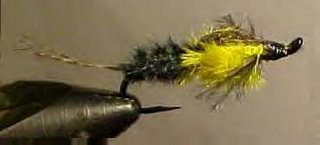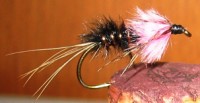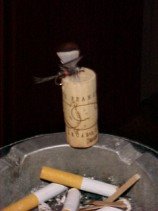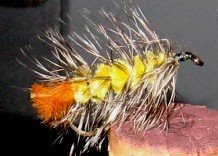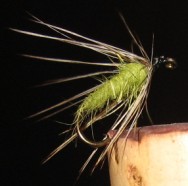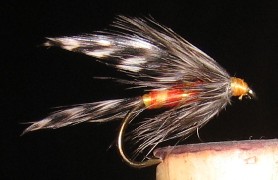 .. Here's our annual report on the summer fly box. It looks very
.. Here's our annual report on the summer fly box. It looks very  similar to last year's box, but we've continued with our growing fondness for the Shop Vac.
similar to last year's box, but we've continued with our growing fondness for the Shop Vac... Sizes have become in some instances larger, and in other instances, smaller.
 .. The Prince Nymphs are absolutely gigantic, (6 & 8,) and working wonders in all waters.
.. The Prince Nymphs are absolutely gigantic, (6 & 8,) and working wonders in all waters. .. The stimulators have also grown in size, (6 to 10,) while the Elk Hair Caddis have both grown and shrunk, (6 to 16.)
.. The stimulators have also grown in size, (6 to 10,) while the Elk Hair Caddis have both grown and shrunk, (6 to 16.).. The bead head nymphs are now outnumbering the unweighted variety about 6 to 1.

 .. The itty-bitty Bead Head Caddis, (14 &16,) is doing a number on even the most educated fish on the Madison River and the Gallatin River.
.. The itty-bitty Bead Head Caddis, (14 &16,) is doing a number on even the most educated fish on the Madison River and the Gallatin River... The eensy-weensey Shop Vacs, (16 in particular,) are pure death from above on the gullible Brookies of the Upper Gibbon River and the cold water Firehole River.

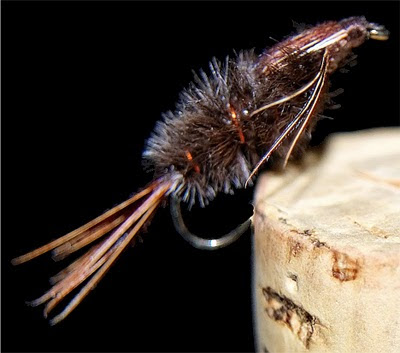 .. Old favorites continue to be very productive and haven't been relegated to the museum yet.
.. Old favorites continue to be very productive and haven't been relegated to the museum yet... Feather Dusters, (original and yellow in sizes 10 to 14,) are still the go-to fly for soft riffles and dark shallow undercut banks.

 .. Jacklin's Rock Worm and the Madison Mauler, have a reserved place in the box as well. These flies are particularly useful in the seams and long slicks at the heads of pools as well as the long tail-outs on the few dark spots on Fan Creek and Duck Creek.
.. Jacklin's Rock Worm and the Madison Mauler, have a reserved place in the box as well. These flies are particularly useful in the seams and long slicks at the heads of pools as well as the long tail-outs on the few dark spots on Fan Creek and Duck Creek. .. The Irresistible Bumble Bee is both decorative in the fly box and a surprisingly effective fly on big water like the Madison River below the lakes.
.. The Irresistible Bumble Bee is both decorative in the fly box and a surprisingly effective fly on big water like the Madison River below the lakes. .. For some idiosyncratic reason we always have a few Goddard Caddis in the box.
.. For some idiosyncratic reason we always have a few Goddard Caddis in the box... They don't seem to perform any better or worse than the elk or deer hair variety, but they appeal to us and we use them quite often.
 .. The Madame X is useful as a caddis imitation and also, with it's broad wing, doubles as a spruce moth or white miller caddis. We choose to use these in sizes bigger than the bugs on the water. They take their fair share of fish.
.. The Madame X is useful as a caddis imitation and also, with it's broad wing, doubles as a spruce moth or white miller caddis. We choose to use these in sizes bigger than the bugs on the water. They take their fair share of fish... Should you choose to tie up a mess of each fly you'll certainly have at least $1,000.00 invested before you buy the box to put them in. About as much fun as you can have cheaply in this day and age.




